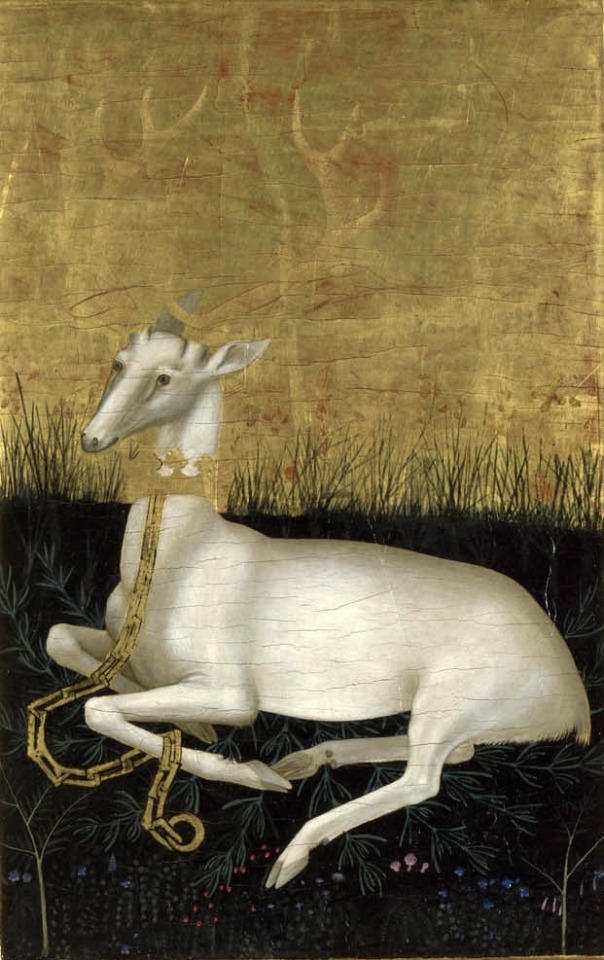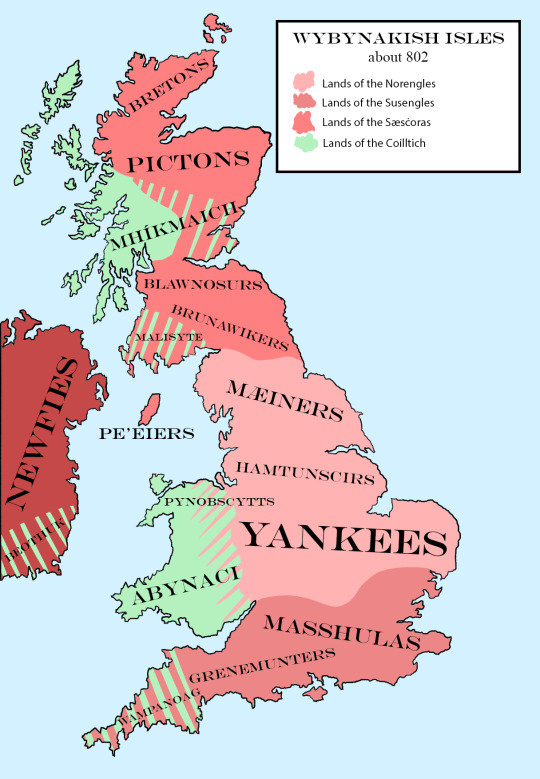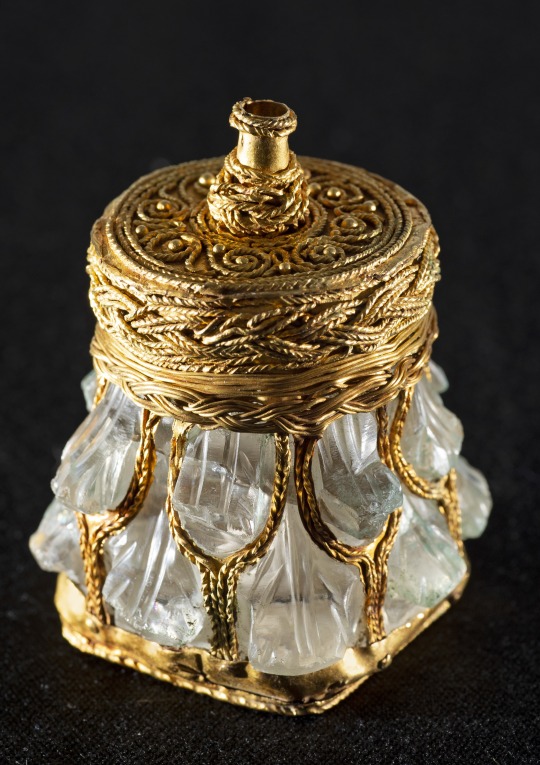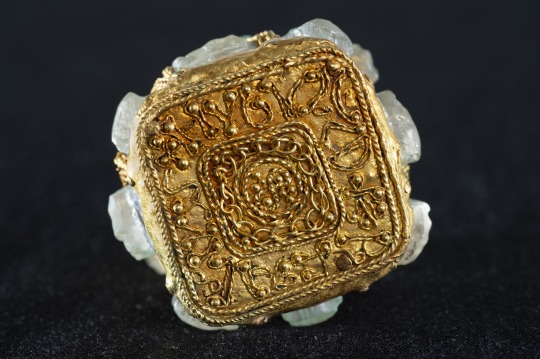#anglo saxons
Text



The Wilton Diptych (1395–1399) — Coat of arms of Richard II (Arms of England of 1340 impaled with the mythical arms of Edward the Confessor), with Richard II's white hart badge.
#medieval#middle ages#mediaeval#art#england#english#altarpiece#richard ii of england#edward the confessor#coat of arms#heraldry#white hart#hart#stag#history#anglo saxon#anglo saxons#king#saint#christianity#christian#religious art#religion
113 notes
·
View notes
Text
England’s Anglo-Saxons have a reputation for being violent conquerors. The truth, however, is more nuanced and they were more peaceful than you might think.
14 notes
·
View notes
Text

Conquest of the Wybynakish Isles by the Susengles, Norengles, and Sæscòras. Circa A.D 802.
This came to me in a dream.
8 notes
·
View notes
Text

2 notes
·
View notes
Text
If I had a nickel for every time a King of England was canonised, I'd have two nickels, which isn't a lot but it's weird that it happened twice
If I had a nickel for every time an Anglo-Saxon King named Edward got canonised I would have the same nickels, which I think is even weirder
#history#anglo saxons#English monarchy#Catholic Church#canonisation#King Edward the Martyr#King Edward the Confessor#my bois#well no not really#but can we please talk more about the Anglo Saxons?#they were cool
5 notes
·
View notes
Text



“Men of Iron” by Howard Pyle, 1965 print by Harper & Row, as part of the Perennial Classics line
In referring to Arthur and his Knights, Pyle said: “…it is hardly supposed that their like will ever be seen again in this world.” – from the foreword of “The Story of King Arthur and His Knights” (1903)
#vintage#medieval literature#arthurian literature#king arthur#knights#chivalry#anglo saxons#Aryan#britain#Howard Pyle
3 notes
·
View notes
Text
After the Norman conquest of England a lot of the housecarls and thegns, the professional soldiers and warrior-aristocracy, fled to Constantinople and joined the Varangian guard.
It makes me wonder if anyone was present at all three of Stamford Bridge, Hastings and Manzikert. The battles that ended the Viking age, Anglo-Saxon period and (arguably) pushed the Roman Empire beyond the point of no return.
#anglo saxons#varangians#byzantines#romans#if anyone has written a book about this i want to read it...
0 notes
Text
Some kind of "levelling" is being attempted in our society.
Douglas Murray

1 note
·
View note
Text
Eagle Forum: Cal Thomas: What Works? Common Sense Solutions
Source:The New Democrat
Right-wing commentator, columnist and author Cal Thomas, who I do like and respect, had a book come out this year called What Works. And in his book he lays out what works in America and what he believes is the best way for Americans to live. Essentially built off the two-parent family with a mother and father. Where romantic couples don’t live together until they are…

View On WordPress
#America#Anglo Saxon America#Anglo Saxon Americans#Anglo Saxons#Cal Thomas#Christian Nationalism#Christian Nationalists#Christian Right#Eagle Forum#Far Right#Nationalism#Nationalists#New Right#Phyllis Schlafly#Populism#Populists#Tea Party#The 1940s#The 1950s#United States
0 notes
Text

Alfred the Great at the Battle of Ashdown, 871
by Morris Meredith Williams (1913)
#alfred the great#battle of ashdown#art#morris meredith williams#ethelred#king#west saxon#danes#danish#anglo saxon#anglo saxons#england#vikings#english#viking#history#berkshire#the northmen in britain#eleanor means hull#medieval#middle ages#europe#britain#axe#european
220 notes
·
View notes
Text
In 1931, a scholar named Bernhard Bischoff decoded a cypher placed between two saints’ lives in an early ninth-century manuscript from Eichstätt, Germany. The lives were written about Saints Willibald and Winnebald, two English brothers who in the eighth century became, respectively, the Bishop of Eichstätt and Abbott of Heidenheim, both in the modern day region of Bavaria.
The cypher reads:

Secundumgquartum quintumnprimum sprimumxquartumntertium cprimum nquartummtertiumnsecundum hquintumgsecundum bquintumrc quartumrdinando hsecundumc scrtertium bsecundumbprimumm
Bischoff worked out that all vowels had been replaced by ordinal numbers - ‘second, g, fourth, fifth, n, first, s…’ and so on. Each of these numbers could be replaced with the corresponding vowel, to make the Latin sentence:
Ego una Saxonica nomine Hugeburc ordinando hec scribebam
I, a Saxon nun called Hugeburc, have written this
...
Hugeburc is the earliest known English woman author of a full-text literary work.
585 notes
·
View notes
Text
Were the Vikings as brutal as history tends to depict them? Famous Vikings like Ivar the Boneless had multiple sides to them and their lives weren’t all killing and raiding.
15 notes
·
View notes
Text


Hey Everyone! Look at this Gold and Rock Crystal Bottle from the Galloway Hoard!
In September of 2014 an avid metal detectorist named Derek Mclennan discovered one of the grandest historical finds in Scottish archaeological history. While searching on church lands near Balmaghie, Mclennan uncovered the Galloway Hoard, a viking age treasure hoard consisting of over 100 objects dating to around 900 AD. While the hoard has some gold objects, most are silver including pieces of jewelry, hack silver, and silver ingots.

Among the objects, the most incredible is a rock crystal bottle that is decorated with gold. The bottle was found inside of a silk pouch, the silk coming from either Byzantium or Asia. The crystal jar itself is not from the middle ages but is Roman and dates to the 4th century. Later in the early middle ages the jar was decorated in gold filigree, at the behest of Bishop Hyguald according to an inscription on the gold work. While the identity of "Bishop Hyguald" is unknown, it is thought that he mostly likely came from Northumbria, an Anglo-Saxon kingdom in northern England. Northumbria would be conquered and occupied by Danish Vikings in the 9th century, which explains how the bottle became a part of the Galloway Hoard.
Today, the bottle along with the rest of the Galloway Hoard is housed at the National Museum of Scotland
#history#antiquities#art#middle ages#medieval art#vikings#anglo saxon england#scotland#scottish history
648 notes
·
View notes
Text
The burials that could challenge historians' ideas about Anglo-Saxon gender

There are a significant number of Anglo-Saxon burials where the estimated anatomical sex of the skeleton does not align with the gender implied by the items they were buried with. Some bodies identified as male have been buried with feminine clothing, and some bodies identified as female have been found in the sorts of "warrior graves" typically associated with men.
In the archaeology of early Anglo-Saxon England, weaponry, horse-riding equipment and tools are thought to signal masculinity, while jewelry, sewing equipment and beads signal femininity. And, for the most part, this pattern fits.
So far though, no convincing explanation has been put forward for the burials which appear to invert the pattern. My Ph.D. research asks whether looking at these atypically gendered burials through the lens of trans theory and the 21st-century language of "transness" has the potential to improve historians' understanding of early Anglo-Saxon gender. Read more.
1K notes
·
View notes
Text
"That Æthelswith was the bestower of such gifts is consistent with the other things we know about her. In 868 she witnessed a West-Saxon charter, in which she made a grant of fifteen hides of her own land in Berkshire. She also witnessed all of her husband King Burgred’s charters. Though we only see glimpses of her influence, Æthelswith, like other Mercian queens before her, was a politician.
In 874, twenty one years after Æthelswith married Burgred, the royal couple were forced out of their kingdom by an encroaching Viking army. They fled together to safety in Rome. While Burgred died soon after they arrived, Æthelswith outlived him for another decade, which she spent in Italy.
Queen Æthelswith passed away in 888 in Pavia, and was laid to rest there. She may have been undertaking a pilgrimage when she died. Her body and the ring that she once bestowed were both buried underground a thousand miles apart. And they say medieval women didn’t travel…"
#Æthelswith#history#women in history#women's history#9th century#english history#queens#leaders#english queens#anglo saxon history#anglo saxon england#medieval women#medieval history#middle ages#medieval#archeology
249 notes
·
View notes
